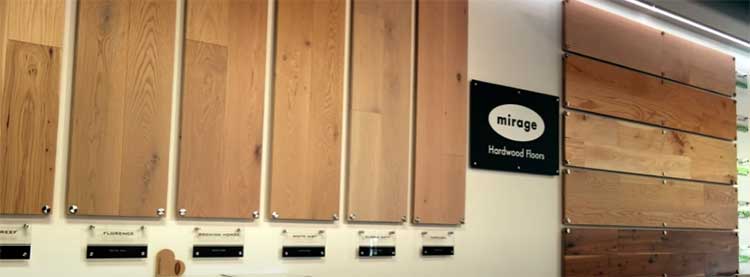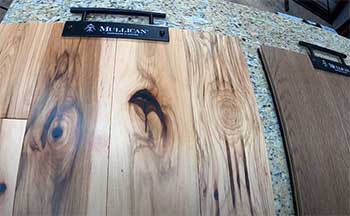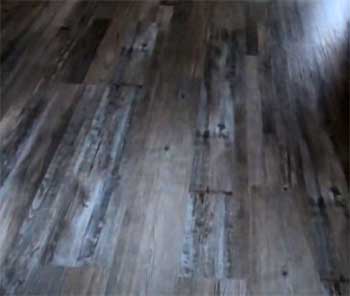I’m standing in my living room, barefoot, feeling the smooth, cool touch of my Mirage hardwood floors beneath me. If you’re hunting for flooring that blends style, durability, and a touch of luxury, let me tell you—Mirage is a game-changer.
I’ve walked on these planks for years, and they’ve transformed my space into something warm and timeless. Whether you’re remodeling or building new, Mirage’s quality and aesthetic make it a top pick.
Trust me, you’ll want these floors under your feet too. Let’s explore why they’re worth every penny.
My Experience With Mirage Wood Flooring

Picture this: I’m moving into my new home, boxes everywhere, and the first thing I notice is the tired, outdated carpet. I knew I wanted something classic yet modern, durable yet beautiful. After weeks of research, I landed on Mirage hardwood flooring.
Why?
Because it promised quality, and boy, did it deliver. I chose the Flair Collection in a soft gray tone, and the moment it was installed, my home felt alive. The planks were sleek, the finish matte and inviting, and the overall vibe was exactly what I’d dreamed of.
Installing Mirage was a breeze with a professional team. The boards fit together like puzzle pieces, no gaps or wobbly edges. I remember running my hand over the smooth surface, marveling at how each plank looked unique yet cohesive.
It’s been three years now, and my floors still look as stunning as day one. I’ve spilled coffee, dropped forks, and even had my dog scamper across them daily, yet they hold up remarkably well. Sure, there’s a tiny scratch here or there, but nothing that screams “replace me.”
My experience has been overwhelmingly positive, but let’s break it down further so you can decide if Mirage is right for you.
The Pros of Mirage Wood Flooring
- Unmatched Aesthetic Appeal

Walking into a room with Mirage floors is like stepping into a design magazine.
The variety of collections—Flair, Admiration, Natural, and more—offers something for every taste.
I went with Flair’s muted gray for a modern, airy feel, but you could pick rich walnut or classic oak.
The colors range from bright whites to deep browns, and the textures, like brushed or smooth, add character. Each plank feels handcrafted, with natural grain patterns that make your floor a conversation starter. It’s not just flooring; it’s art you walk on.
- Precision Milling for Easy Installation
One thing I noticed during installation was how perfectly the boards aligned. Mirage’s milling is top-notch, with tight tolerances that mean no creaky gaps or uneven seams. My installer raved about how easy it was to work with, which saved time and hassle.
Whether you’re going for solid hardwood or engineered, the click-lock options make DIY possible, though I’d recommend a pro for that flawless finish. This precision gives you a stable, uniform floor that feels solid underfoot.
- Durable Finishes That Stand the Test of Time
Mirage’s finishes, like Nanolinx and DuraMatt, are built to last. I’ve got the DuraMatt finish, and it’s like a shield against daily wear. Spills wipe up easily, and the matte look hides dust and minor scratches. The company claims their finishes are five times more durable than competitors, and I believe it.
My kitchen floor, a high-traffic zone, still looks pristine despite constant use. For homes with kids or pets, these finishes are a lifesaver.
- Eco-Friendly and Responsible Sourcing
If you care about the planet, Mirage has your back. Their wood comes from responsibly managed forests, and they use hypoallergenic, VOC-free finishes. I love knowing my floors aren’t harming the environment or my indoor air quality.
Mirage’s commitment to sustainability, like using recycled materials and supporting conservation groups, made me feel good about my choice. It’s flooring you can feel proud to own.
- Versatile Options for Any Space
Whether you’ve got radiant heating or a concrete subfloor, Mirage has you covered. Their engineered options work in basements or over concrete, while solid hardwood is perfect for above-grade rooms. I installed engineered floors in my basement, and they’ve held up beautifully against humidity.
With various widths, species, and finishes, you can customize Mirage to fit any room, from cozy bedrooms to bustling kitchens.
The Not-So-Good Parts of Mirage Wood Flooring

- Higher Price Point
Let’s be real—Mirage isn’t cheap. Prices typically range from $4 to $10 per square foot, and exotic species can climb higher. My Flair Collection cost me about $7 per square foot, not including installation, which added up for my 2,000-square-foot home.
If you’re on a tight budget, you might wince at the cost. There are cheaper brands out there, but I found the quality justified the price. Still, it’s something to consider if you’re watching your wallet.
- Susceptibility to Dents and Scratches
While Mirage’s finishes are tough, they’re not invincible. My dog’s nails left a few faint scratches, and a dropped pot left a small dent in my kitchen. Some users report similar issues, especially with softer woods like maple.
If you’ve got a big dog or rowdy kids, you’ll need to be diligent about nail trimming and furniture pads. Choosing a harder wood like hickory or a brushed finish can help hide minor damage, but it’s not foolproof.
- Shorter Board Lengths
One quirk I noticed is that Mirage’s boards, especially in engineered lines, tend to be shorter—often under five feet. I prefer longer planks for a seamless, authentic look, and Mirage’s shorter lengths can feel a bit choppy in large spaces.
They’ve improved over the years, but if long boards are your thing, you might need to special-order or look elsewhere. It didn’t bother me much, but it’s worth noting for open floor plans.
- Warranty Limitations
Mirage offers a lifetime structural warranty and a 35-year finish warranty for residential use, which sounds great. But there’s a catch: the warranty doesn’t cover damage from pet claws, excessive sunlight, or improper maintenance.
I learned this when a friend tried to claim warranty for sun-faded floors, only to be denied. You’ll need to be meticulous about care—like using curtains to block UV rays—to keep your warranty intact. It’s not a dealbreaker, but it requires diligence.
- Customer Service Challenges
I’ve been lucky with my floors, but some folks report spotty customer service. If you get defective boards or installation issues, Mirage’s response can feel lukewarm. A friend of mine had 40% defective boards in a shipment, and getting replacements was a hassle.
While my experience was smooth, it’s frustrating to hear that support isn’t always top-tier, especially for a premium brand.
Maintenance Tips For Mirage Wood Flooring
- Regular Sweeping and Vacuuming
Keeping your Mirage floors sparkling is easier than you’d think. I sweep mine twice a week with a soft-bristle broom to catch dust and pet hair. A hardwood-specific vacuum (without a beater bar) works wonders for quick cleanups.
This prevents dirt from scratching the finish, especially in high-traffic areas like my living room. Make it a habit, and your floors will thank you with a lasting shine.
- Use the Right Cleaning Products
Mirage recommends their own cleaning products, and I agree—they’re worth it. I use a hardwood-safe cleaner sprayed lightly on a microfiber mop. Avoid steam mops or harsh chemicals like bleach; they can strip the finish.
Once a month, I mop my floors with a damp (not wet) cloth, and they look brand new. Pro tip: test any cleaner on a small spot first to be safe.
- Protect Against UV Damage
Sunlight can fade your floors over time, so I move my rugs and furniture every few months to ensure even exposure. I also installed UV-filtering window treatments in my sunroom, which has kept my oak floors vibrant.
If you’ve got big windows, consider curtains or blinds to protect your investment. It’s a small step that makes a big difference.
- Prevent Scratches and Dents
My dog’s nails were my biggest worry, so I keep them trimmed weekly. I also use felt pads under furniture legs to avoid scratches when rearranging. For heavy appliances, I slide cardboard underneath before moving them.
If you’re prone to dropping things (like me), consider a harder wood species or a textured finish to mask minor dings.
- Resurfacing for Longevity
Mirage says their floors can be sanded up to four times, but I’d say three is more realistic for engineered options. I haven’t needed to resurface yet, but experts suggest doing it every 7-10 years to refresh the look.
Hire a skilled professional for this—it’s not a DIY job unless you’re a pro. This keeps your floors looking fresh for decades.
Comparing Mirage To Other Flooring Brands
Let’s put Mirage head-to-head with Mullican Hardwood Flooring, AquaProof Flooring, and MSI Flooring. I’ve checked out these brands in showrooms and friends’ homes, so here’s how they stack up based on my experience and research.
- Mirage Vs. Mullican Hardwood Flooring

Mullican Hardwood Flooring is a strong player, especially if you’re after American-made products.
Their collections, like Muirfield and Ridgecrest, offer solid and engineered options with a focus on classic oak and maple.
I saw Mullican’s floors at a friend’s house, and the warm tones were lovely, but the finish felt less robust than Mirage’s DuraMatt.
Mullican’s prices, around $3-$8 per square foot, are slightly lower than Mirage’s $4-$10, making it a budget-friendly pick.
However, I noticed Mullican’s milling wasn’t as precise, with occasional gaps that my installer never encountered with Mirage. Mullican’s warranty is solid—up to 50 years for some lines—but it also excludes pet damage, like Mirage.
If you want a cost-effective, traditional look, Mullican’s great, but Mirage edges out for durability and modern style.
- Mirage Vs. AquaProof Flooring

AquaProof Flooring is a newer name, focusing on waterproof hybrid floors that blend wood aesthetics with vinyl-like resilience.
I checked out their displays at a local store, and the water resistance is a big draw, especially for bathrooms or kitchens.
Priced at $2-$6 per square foot, AquaProof is cheaper than Mirage, but it’s not true hardwood—think vinyl with a wood-look top layer.
While AquaProof handles spills like a champ, it lacks the authentic feel of Mirage’s hardwood underfoot.
My Mirage floors in the kitchen still wipe up spills easily, and I prefer the natural warmth over AquaProof’s slightly plastic vibe. For wet areas on a budget, AquaProof works, but Mirage wins for premium quality and timeless appeal.
- Mirage Vs. MSI Flooring

MSI Flooring leans heavily into budget-friendly options, with hardwood and wood-look products ranging from $2-$7 per square foot.
Their Everlife line mimics wood but uses vinyl or composite cores, which I saw in a neighbor’s basement.
It’s durable and moisture-resistant, but the texture feels less refined than Mirage’s natural grain.
MSI’s hardwood options are limited, and the finishes don’t match Mirage’s Nanolinx for scratch resistance. Installation-wise, MSI’s click-lock systems are decent but not as seamless as Mirage’s precision milling.
If you’re after affordability and don’t mind a less authentic look, MSI’s fine, but Mirage’s craftsmanship and aesthetic variety make it my top choice for a high-end home.
In the end, Mirage stands out for its balance of beauty, durability, and versatility. Mullican offers a traditional, budget-friendly alternative, AquaProof excels in wet areas, and MSI keeps costs low, but none match Mirage’s premium feel and long-lasting finishes.
Frequently Asked Questions (FAQ)
In my experience, yes, Mirage is a fantastic choice. The quality of their milling, finishes, and aesthetic variety is hard to match. They’ve won numerous industry awards for a reason—my floors still look stunning after years of use. That said, softer woods like maple can dent, so pick a harder species if you’ve got a busy household. Overall, Mirage’s balance of beauty and durability makes it a solid pick.
Mirage is made by Boa-Franc, a Canadian company based in Saint-Georges, Quebec. They’ve been crafting prefinished hardwood for over 35 years, focusing on quality and sustainability. All Mirage floors are produced in North America, which gives them tight control over manufacturing and ensures consistent results.
“Best” depends on your needs, but Mirage is often at the top of my list for its quality and style. Lauzon and Mercier are strong contenders for eco-conscious or luxury buyers, while Somerset is great for budgets. For me, Mirage’s precise milling, durable finishes, and versatile collections make it a standout for most homes.
Quality is subjective, but Mirage ranks high due to its nanotechnology-based finishes like Nanolinx, which resist wear better than most. Their use of responsibly sourced North American lumber and hypoallergenic coatings adds to the appeal. Brands like Mercier and Lauzon are close, but Mirage’s consistent awards and installer praise give it an edge for premium quality.
Conclusion: Why You Should Choose Mirage?
After years of living with Mirage hardwood floors, I can say they’re worth every cent. They’ve elevated my home’s look, stood up to daily life, and made maintenance a breeze. From the sleek Flair Collection to their eco-friendly practices, Mirage delivers quality you can feel underfoot.
If you’re ready to invest in flooring that’s beautiful, durable, and timeless, Mirage is the way to go. Trust me—you’ll love coming home to these floors every day.
